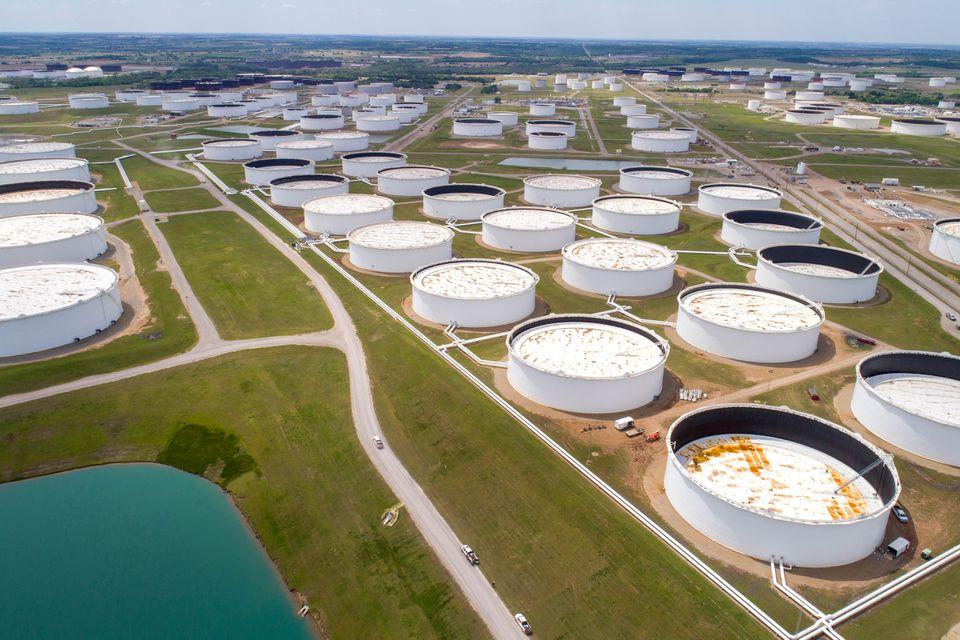Africa-Press – Eritrea. World oil demand will rise more than 2% to a record high of 101.6 million barrels per day (bpd) in 2023, the International Energy Agency said on Wednesday, although sky-high oil prices and weakening economic forecasts dimmed the future outlook.
The Paris-based IEA also said in its monthly report that supply was being constrained because of sanctions on Russia over its invasion of Ukraine.
“Economic fears persist, as various international institutions have recently released downbeat outlooks,” the IEA said, forecasting demand would rise 2.2 million bpd, or 2.2%, in 2023 compared to 2022 and would exceed pre-pandemic levels.
“Similarly, tightening central bank policy, the impact of a soaring U.S. dollar and rising interest rates on the purchasing power of emerging economies mean the risks to our outlook are concentrated on the downside,” it said.
Advanced economies in the Organisation for Economic Co-operation and Development (OECD) would account for most demand growth in 2022, while China would lead the gains in 2023 as it emerges from COVID-19 lockdowns.
China’s recent Covid-19 curbs put the world’s largest oil importer on track for its first fall in demand this century, the IEA said.
The overall demand recovery and constraints on supply because of sanctions on Russia and cautious production increases by OPEC+ pushed oil prices above $139 a barrel in March. Brent crude was trading around $120 on Wednesday.
But the IEA said supplies would soon match demand, adding: “After seven consecutive quarters of hefty inventory draws, slowing demand growth and a rise in world oil supply through the end of the year should help world oil markets rebalance.”
The overall demand recovery and constraints on supply because of sanctions on Russia and cautious production increases by OPEC+ pushed oil prices above $139 a barrel in March. Brent crude was trading around $120 on Wednesday.
But the IEA said supplies would soon match demand, adding: “After seven consecutive quarters of hefty inventory draws, slowing demand growth and a rise in world oil supply through the end of the year should help world oil markets rebalance.”
Meanwhile, high taxes continues to push Kenyan consumers into expensive fuel.
Taxes and levies account for more than 50 per cent of the landed cost of petrol products at Mombasa, with the push to increase revenues on the Standard Gauge Railway (SGR) coming to haunt consumers in the country.
The Energy and Petroleum Regulatory Authority (EPRA) pricing data shows the government is taking Sh62.89 per litre of petrol in taxes and levies, more than half the Sh104.05 it landed at the Port of Mombasa.
The state also takes Sh51.65 per litre of diesel and Sh45.15 on kerosene, whose landed costs are Sh117.46 and Sh106.60 per litre, respectively.
Adding distribution costs, a litre of super petrol in Nairobi has now shot to Sh159.12 from Sh150.12, diesel Sh140 up from Sh131, while kerosene has increased to Sh127.94 from Sh127.94, prices that will remain in place until July 14.
There is upward adjustments on three of the nine different taxes and levies consumers pay in Kenya, as government seeks more revenues.
These are Import Declaration Fee (IDF) which has gone up to Sh3.5 per litre of petrol (calculated on the customs value of the goods imported into the country), from Sh1.81 last year.
A litre of diesel is now charged IDF at Sh 3.96 per litre up from Sh1.64 while importers are paying IDF at Sh3.60 per litre of kerosene, up from Sh1.55.
The government has also adjusted upwards VAT to Sh11.8 per litre of petrol, Sh10.37 for diesel and Sh9.48 on kerosene.
This is from Sh9.10, Sh7.97 and Sh7.25 last year.
In a move to push more business to the SGR and discourage road use by importers and exporters, the government increased the Railway Development (RDL) on fuel to Sh2 per litre from Sh1.04 on petrol, while diesel and kerosene are also attracting higher levies(Sh2.27 and Sh2.02 from Sh0.94 and Sh0.88).
Importers who choose to transport goods by road are paying higher levies compared the use of SGR, where they are paying slightly half the charges.
RDL is paid on all goods imported into the country for home use.
The purpose of the levy was initially for providing funds for the construction and operation of an SGR, which was funded through a Sh364 billion loan from China.
The country is currently struggling with a debt burden amid increased repayments for the SGR, with its operations still not bringing in enough revenues as targeted.
Meanwhile, excise duty at Sh21.95 per litre of petrol and Sh11.37 for diesel and kerosene continues to take the lion share of taxes.
Consumers in Kenya are also paying Road Maintenance Levy, Petroleum Development Levy, Petroleum Regulatory levy, Anti-adulteration Levy, and Merchant and Shipping Levy.
Pump prices are expected to rise further as the government moves to phase out the fuel subsidy kitty, which has been in place since last year.
Without the cushion, consumers would be paying Sh184.68 for a litre of petrol, Sh188.19 for diesel and Sh170.37 for kerosene, EPRA indicates in its latest review.
This means the government is compensating Sh25.56 per litre of petrol, Sh48.19 on diesel and Sh42.43 per litre of kerosene sold at the pump.
However, it remains the biggest taker in fuel trading in Kenya where taxes remain high.
A statement by the Exchequer on Wednesday stated that the fuel subsidies are inefficient and often lead to misallocation of resources and crowding out of public spending on productive sectors.
“This results in unintended consequences such as disproportionately benefiting the well-off. Even though scrapping off the plan will trigger a price hike, it will not be to the levels witnessed before Russia- Ukraine crisis,” National Treasury CS Ukur Yatani said.
He added that the cost of fuel subsidy could eventually surpass its allocation in the National Budget, thus potentially escalating public debt to unsustainable levels, hence disrupting the government’s plans.
The exchequer lamented that there is nothing it can do to further ease the burden for consumers, saying the impact of high fuel prices is a global phenomenon.
With the removal of the subsidy plan and recently hiked taxes on petroleum products, Kenya will have the highest fuel prices in East Africa, pushing up further the cost of living.
For More News And Analysis About Eritrea Follow Africa-Press







